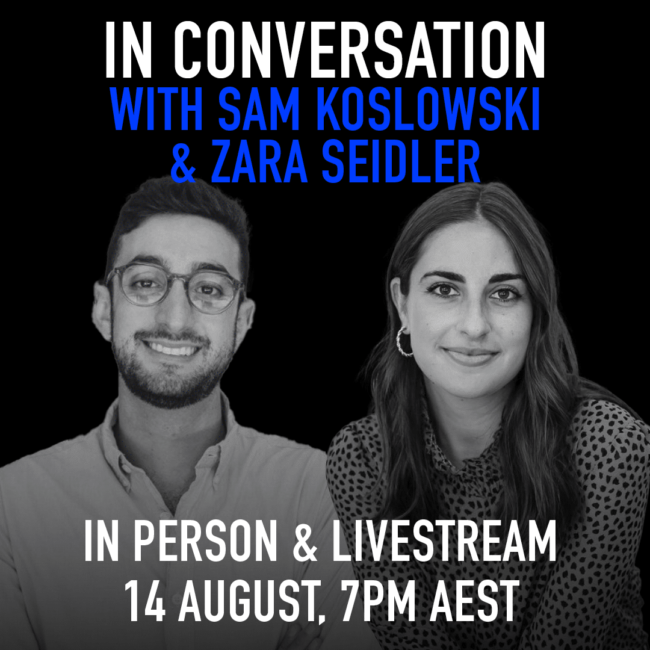
The new normal: The ethical equivalence of cisgender and transgender identities
Opinion + AnalysisRelationships
BY Louise Richardson-Self 14 JUN 2023
We’ve witnessed some pretty shocking hostility, anger, and violence directed towards the trans community recently, from anti-transgender rights activist Kellie-Jay Keen-Minshull’s national speaking tour, to an attack on LGBTQIA+ peaceful protestors by far-right Christian men.
This hostility isn’t new. Recall the former Warringah candidate Katherine Deves derogatorily described Trans and Gender Diverse (TGD) people as “surgically mutilated and sterilised”. Or that gender dysphoria was described as a “social contagion” at a Gender Identity in Law forum at Hobart’s Town Hall, and there was lament that “women and girls would miss out on opportunities to reach elite levels” in professional sport.
It is no secret that transgender women, in particular, are at the forefront of the public discourse around trans rights, and worldwide the slogan “trans women are women” has been catching on. But there is still resistance when certain collectives retort that “women” just are “adult human females”.
What drives these clashes is divergence over the metaphysics of sex and gender: what is ‘sex’, really? What is ‘gender’, really? The way we answer these questions shapes our estimation of which people can belong to which group, how people can behave, and in what ways society should recognise our identities.
Some people think the relationship from sex to gender is straightforward: male sex = man, female sex = woman. But others think that their relationship is more complicated and unpredictable. People might be assigned female at birth but develop a transmasculine gender identity. That person is transgender, and many believe it is both polite and metaphysically accurate to identify these people as men. Likewise, a person assigned male at birth could develop a transfeminine gender identity, and it is appropriate to identify her as a woman.
If this is what you think about sex and gender, then you believe that gender does not reduce to sex. Your view of gender is ‘trans inclusive’.
Enter ‘cisgender’
To help us better articulate the gendered positions that are available to us, in the 1990s trans activists coined the term ‘cisgender’, or ‘cis’ for short referring to people whose gender identity and expression matches the biological sex they were assigned when they were born. Although ‘cisgender’ has been around a long time, it only went ‘mainstream’ pretty recently, being added to the Oxford English Dictionary only in 2015.
I’ve come to believe that cisgender is an ethically necessary concept. And, speaking personally, it is a concept that also allows me to better understand myself and how we can be more inclusive of others.
As B. Aultman explains, “The terms man and woman, left unmarked, tend to normalise cisness — reinforcing the unstated ‘naturalness’ of being cisgender. Using the identifications of ‘cis man’ or ‘cis woman’, alongside the usage of ‘transman’ and ‘transwoman’, resists that norm reproduction and the marginalisation of trans people that such norms effect.”
Putting the point another way, being non-trans is a common, not normal self-expression. Simultaneously, being trans is an uncommon, but nonetheless normal expression. Introducing a positive marker of nontrans identity through the term ‘cisgender’ can have a really important social impact: it can help to destigmatise being trans.
For this reason, ‘cis’ is not just a label for me; it’s meaningful. It allows me to make sense of myself, my experiences, and my social surrounds in a deeply existential way.
Embodied identity
I was raised on a diet of feminist materialism, or ‘difference feminism’, so how I see my self — my own being — is thoroughly embodied; the self is, first and foremost, fundamentally corporeal. But there is no simple line from embodied experience to social identity. All identities are socially constructed to an extent; we don’t decide who we are on our own but do so in response to how other people perceive and interact with us within a rich and layered social environment. And all subjectivity has its basis in the flesh, by virtue of us being embodied creatures.
I believe it is perfectly plausible to acknowledge that different women have different bodies (whether assigned female at birth or not), and so will have qualitatively distinct experiences of being women.
Let me offer some examples, I have always been acutely aware that, because I look the way that I do, because I (appear to) have a certain body, I am treated differently to cisgender men. When I was growing up, people would sexually objectify me. This is something that I share with some, but not all cisgender women, and some, but not all transgender women. I have been harassed because I am a cisgender woman, and a trans woman is harassed because she is a trans woman. Our stories may have similarities, but they will also have distinctiveness.
Today, I spend most of my time dealing with sex-specific chronic pain and the associated medical sexism that goes with the territory. Since this type of pain (endometriosis and adenomyosis) is registered as “women’s pain” in our collective consciousness, the recognition that I am a cisgender woman is significant. It’s easy to comprehend that a transgender man would have a qualitatively distinct experience when he seeks healthcare for his endometriosis.
It is imperative to acknowledge that there are certainly some structural privileges shared by both cis men and women. Acknowledging that we are cis is the first step in owning that privilege. However, the fact remains that cis women stand in a relation of oppression and privilege in relation to cis men, which is to say that, like trans women, cis women are oppressed because of their sex-gender configuration too, whereas cis men are not.
Talking about myself as a ‘cis woman’, thinking of myself as a ‘cis woman’, keeps this rich complexity front and centre as I navigate my day-to-day life.
Owning our gender
So what are the implications of this? Must we always use a prefix (‘cis’ or ‘trans’)? Do we need to make structural or institutional changes? And should all non-trans people recognise themselves as ‘cisgender’?
We don’t always need a prefix. Say you want to compare the average earnings of women to the average earnings of men. In this instance, there is no need to distinguish between trans women and men, and cis women and men. Or, say you want to tally the members of a political party by gender; again, there is no reason to distinguish the trans members from the cis members. Whether we need a prefix is context-dependent.
Let’s say you’re filling out an admission form for an in-patient stay in hospital. Hospitals are the sorts of places where both your sex and gender identity need to be foregrounded. That form could say, “What is your gender: Man; Woman; Other” and “What was your sex-assignment at birth: Male; Female; Other”. But that form could also say: “What is your gender identity: cisgender man; cisgender woman; trans man; trans woman; other”. It doesn’t really matter, so long as the hospital can obtain the information it needs.
But do you have to identify as cis? In my experience, taking up the label in a self-recognitive way helps to decentre the view that trans people are somehow abnormal. I think that’s a good reason, especially in light of the stigma and violence confronting trans people today. I have found value in it – it helps me to understand my own struggles and reminds me not to universalise my experiences.
This article is part of our Why identity matters series.
Ethics in your inbox.
Get the latest inspiration, intelligence, events & more.
By signing up you agree to our privacy policy
You might be interested in…
Opinion + Analysis
Relationships, Science + Technology
We are being saturated by knowledge. How much is too much?
Explainer
Relationships
Ethics Explainer: Existentialism
Opinion + Analysis
Health + Wellbeing, Relationships
Mutuality of care in a pandemic
Opinion + Analysis
Relationships, Politics + Human Rights




